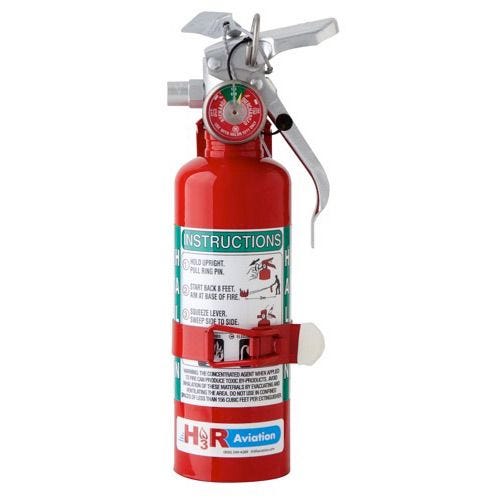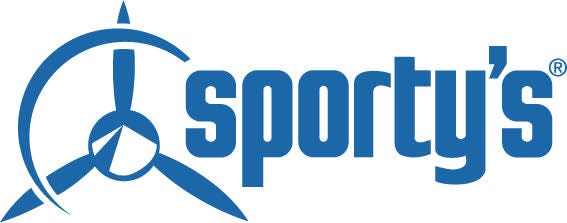Halon Fire Extinguisher (2.5lb. gross weight, 2B:C rating)

In stock
Backordered
Halon fire extinguishers are perfect for the cockpit. Halon leaves no residue, doesn't corrode expensive avionics or other aircraft parts, doesn't impair vision and doesn't freeze surfaces. The small rechargeable extinguisher carries a 2B:C rating, weighs under 3 pounds, and at 10" in height and 2 7/8" in diameter is perfect for the flight bag.
Specifications:
Agent weight: 1.25 pounds
Gross weight: 2.5 pounds
Discharge range: 9-12 feet
Discharge time: 10 seconds
Height: 10.25 inches
Width: 3.9 inches
Cylinder diameter: 2.6 inches
UL rating: 2B:C
This rechargeable extinguisher has a shelf life of 6 years and is for aviation use only. Bracket included.
Why is Halon the best choice?
Fire needs fuel, oxygen and heat to propagate. The most common extinguishing agents like water, carbon dioxide, dry chemical and foams attack the fire physically to deprive the fire of one or more of these three three elements. Halon differs in the way it puts out the fire. It offers some of water's cooling effect and some of carbon dioxide's smothering action, but its essential extinguishing technique lies in its capacity to chemically react with the fire's components. It actually interrupts the chain reaction of fire.
Water is very effective on class A fires (common combustibles like wood and paper). Halon is effective on common combustibles (although not as effective as water), but Halon is also effective on class B (flammable liquids), and it does not conduct electricity back to the extinguisher operator (class C).
Halon is similar to CO2 in that it is suitable for use in cold weather and leaves no residue. Unlike CO2, however, Halon does not displace the air from the area where it is dispensed. Even for the toughest fires, less than an 8% concentration of Halon by volume is required, leaving plenty of air to use in the evacuation process. Also, unlike CO2, there is no danger of "cold shock to avionics or other sensitive electrical equipment.
Dry chemical fire extinguishers are effective on A, B and C class fires. However, they are highly corrosive, and create billowing clouds of choking dust. Dry chemical extinguishers should not be used in an aviation environment.
Foam extinguishers are effective on class A and B fires, and are particularly useful for preventing ignition of flammable liquid spills. However, foams are inferior to Halon in that they do require cleanup and in that they are not for use on electrical fires.
Halon is a liquefied gas which, when discharged, leaves the nozzle in a stream that is about 85% liquid and 15% gas. This gives the agent a range of 9 to 15 feet and offers significant advantages in fighting fires in large aircraft cabins.





